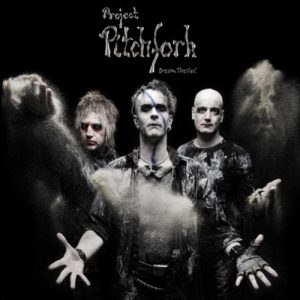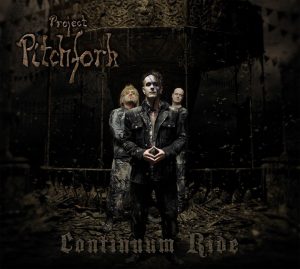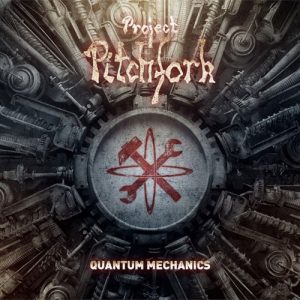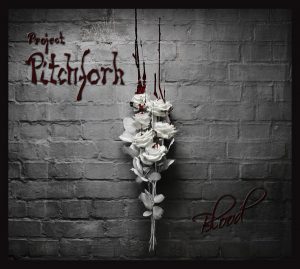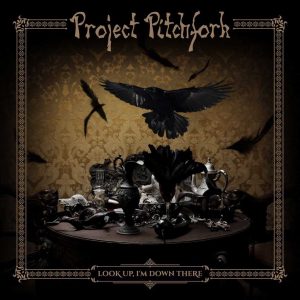Back To Basics
It’s 2009. The whole gothic/industrial collective is running out of ideas, no-one wants to take a chance on ‘new’ music as the global recession kicks in, and competing genres with major-label backing are the ones getting attention from the youth of the day. And Project Pitchfork realize the time is ripe to revive the sound that made them great. Goodbye guitars, goodbye esoteric concepts – we’re back in the darkwave/electro-industrial/whatever-you-call it territory again. The album to celebrate this return was Dream, Tiresias!, their first album on long-running German darkwave label Trisol. One could even say the return to prophetic album titles was the sign of the band finding it’s roots once more. There are still plenty of evidence of their 00s sound in the sonic texture and production technique, only now it’s framed in the traditional Project Pitchfork style.
The most notable aspect of the album is the rediscovery of the ‘Schaffel’ rhythm, that ever-so-catchy use of triplet eights to create a swinging electronic groove. Much loved by the futurepoppers, the Pitchies put their own ‘swing’ on it via Feel! and If I Could. Nasty Habit sees Spilles quirky lyricism at it’s best (or worst, if some Amazon reviews are to be believed), a cynical swipe at pharmaceutical usage. An End was the enduring live hit from this album, an unusually ‘hard’ synth lead by previous standards, but the chord progression and ear candy are pure Pitchfork. Also notable is a very new age styled string progression towards the close of The Tide. Admittedly, none of the albums tunes quite rival the greatest hits described earlier, but in many respects it’s just good to get them back doing what they do best.
Singles and Versions: No singles other than promos were released during their experimental phase, but the dying format was revived with a 9-track remix collection for Feel!. No real surprises in the line-up – [:SITD:], Noisuf-X and Die Krupps all doing their usual thing, the only real deviation coming from The Retrosic, partly re-recording the vocal to make it into a semi-cover. There’s also a download-only Remixed EP centred on ‘Nasty Habit’, but there’s nothing essential here.
As for the album, it originally received only a CD release in terms of physical formats, with some versions offering 3 bonus remixes from the Feel! EP. A double vinyl (with CD included) eventually appeared as part of Trisol’s reissue series in 2019.
And sure enough, they kept at it. Continuum Ride came a year later, and it continued the trend of solid, dark electronics, that slightly grainy edge that keeps alive memories of their 90s heyday, but still highly accessible. Beholder was the lead promo video for this album (singles now out of vogue), but I never saw anything special about it musically. Endless Infinity might be a linguistic redundancy, but it’s still the one that screams ‘anthem’! I originally jumped at Stacked Visions, but later realised it was just a little too close to Nasty Habit from the last album. And if there is a problem with this album, it’s that it’s simply too similar to the previous one. For the first time in their career, Project Pitchfork are playing it safe. It’s still a good album, but it’s the SAME good album they put out a year ago!
Singles and Versions: No singles barring a ‘Beholder’ promo, but there was a limited edition with some alternate versions (not really remixes) that will be of interest to devotees but none offers a substantially different take on the originals. Also a bonus DVD of ‘Beholder’ – check YouTube – probably not at work – then decide if you want to shell out the Euros for that one. A double vinyl and double CD version of the album (same tracks as the original limited edition) emerged in 2019 as part of Trisol’s reissue schedule, if you’re up for the full and totla experience.
I have a science background, so 2011’s Quantum Mechanics was notable for me as the first album by this band named after something I’d studied academically (Eastern Mythology students would have been in-tune from the early 1990s). It sees a marginal return to extended-length song structures, the seven-and-a-half minute Lament trying to be the epic love song they haven’t managed in years, but I’ve always found it falling slightly short of greatness. And that seems to be the tale of the album of a whole – it never deviates off into the self-indulgent drivel of the early-to-mid 00s, even with the longer tunes, but just misses the highs of their late 90s work.
The tunes kick hard, the band remain on message re: the ills of human society throughout. But it’s desperately in need of one bona-fide anthem to kick it into the conscious sphere. The most notable moments come towards the album’s end – The Queen Of Time And Space has a fairytale feel, breaking from the albums real-world tone to suggest there are greater forces at work that ourselves. But if you want songs about man playing God – try Splice, giving the thorny issue of genetic modification the evil scientist treatment. But we’re still waiting for the next mega-anthem.
Singles and Versions: A limited 2CD version with a 6-track bonus disc for those who can find it. ‘Tempest’ is main highlight here, a thoughtful look at the fragility of nature, a pity it didn’t make it to the main album. There’s alternate versions, but they didn’t pick the best songs to provide variations of. The double vinyl version arrived in 2020, also including the double CD for completists.
The awaited ‘big hitter’ would eventually arrive on the 2013 album Black, in the form of Rain, the delicate keyboard line dropping like, erm, rain before the inevitable electronic storm hits. It’s probably been the biggest Pitchfork track of their Trisol era, and the only post-Daimonion track I ever get DJ requests for. It does unfortunately sit on an album patchier than the last few. The Circus will be enjoyed by fans of 90s Pitchfork with it’s whole metaphor-for-the-failings-of-humanity, and Black Sanctuary is one of those track that ‘just clicks’ with me. But there’s couple of overly-drawn out tunes bookending the album and some moments (Enchanted Dots of Light in particular) get a little too wrong-kind-of-90s-nostalgia. Too much Rave, not enough Wave?
Singles and Versions: The now-usual limited 2CD edition (with 2CD/2LP arriving with the same tracklisting in 2020) with some exclusive tracks and alternate versions. The two exclusives – ‘Midnight Moon Misery’ and ‘Onyx’ were both live regulars for a while, an odd decision given their limited nature and that, to my ears at least, that these are two song best left to limited editions, neither ever really getting out of first gear. Also the standards trio of alternate versions, take ‘em or leave ‘em.
If you’re looking for an honest-to-goodness Project Pitchfork album that doesn’t try to be clever (actually, that’s a lie, they’re all pretty cerebral), 2014’s Blood is probably what you’re after. The album may have a central theme (guess what), but each song stands up in its own. Blood-Pressure is the stand-out, as Peter Spilles makes a very rare excursion into obscenity. A precisions F-Strike can be incredibly effective when well-timed, and Spilles rant into modern-day forms of exploitation is the right time to say “Fuck That Shit”. If you prefer the elaborate, drawn-out conceptual songs, Blood-Diamond will be of interest, using ‘blood’ as a metaphor for power-inherited-via-birthright, but I’ll leave you to untangle the rest. I also found album opener Blood-Line catchy in it’s own way, but this is one of those albums where you might easily go for one of the others.
Singles and Versions: You’ve guessed it – 2CD limited version that sold out far too quickly, three alternate versions, but at least we get one more hidden treat in ‘Blood-Night’, somewhat rough rhythmically but proof in the chorus that they can still do a big ‘call to arms’ synth lead when they want to. The double vinyl and CD reissue emerged with the same tracks in 2020.
2016 saw the awkwardly-titled Look Up, I’m Down There. The album title gives hint at the underlying ‘big picture’ theme of the album, predominantly looking at cosmology and natural phenomena, though in the case of Propaganda Child the world in question is a virtual one. It’s not the easiest album to unpick – it’s clear they want Titânes as the out-and-out club track and Volcano as the tuneful “fan favourite”, but the former came across as somewhat monotonous, and the latter just sounded like it was trying too hard to make me like it, like it was full of motifs and devices from past hits. I always went for Into Orbit where it takes a piano line borrowed from Coldplay (shudder!) and transforms it into something far more to my tastes. The hidden gem for me was Sunset Devastation – the concept that our own deaths are part of some greater plan of nature chimes very close to my own view of existence as a whole. But that’s the thing about this band – you never know when they’ll hit upon a concept that catches your ears and says ‘Yes – I agree with that’.
Singles and Versions: The 2CD version this time come as quite a fetching, if overpriced, book, featuring lyrics and a passage (thankfully in English as well as German) explaining the album’s concept – with the now expected 2CD/2LP reissue following in a couple of years. The one exclusive track (Pendulum) isn’t special, but interestingly, one of the mixes is an extended take of ‘What Have We Done’, a previously-unreleased token on their Second Anthology compilation described below.

